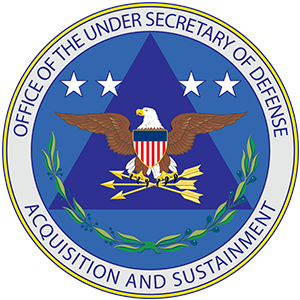
A secretary, administrative assistant, executive assistant, personal secretary, or other similar titles is an individual whose work consists of supporting management, including executives, using a variety of project management, program evaluation, communication, and/or organizational skills within the area of administration. There is a diverse array of work experiences attainable within the administrative support field, ranging between internship, entry-level, associate, junior, mid-senior, and senior level pay bands with positions in nearly every industry, especially among white-collar careers.

The National Geospatial-Intelligence Agency (NGA) is a combat support agency within the United States Department of Defense whose primary mission is collecting, analyzing, and distributing geospatial intelligence (GEOINT) in support of national security. Initially known as the National Imagery and Mapping Agency (NIMA) from 1996 to 2003, it is a member of the United States Intelligence Community.

The United States Department of the Army (DA) is one of the three military departments within the Department of Defense of the U.S. The Department of the Army is the federal government agency within which the United States Army (U.S.) is organized, and it is led by the secretary of the Army, who has statutory authority under 10 United States Code § 7013 to conduct its affairs and to prescribe regulations for its government, subject to the limits of the law, and the directions of the secretary of defense and the president.

The United States Naval Criminal Investigative Service (NCIS) is the primary investigative law enforcement agency of the U.S. Department of the Navy. Its primary function is to investigate major criminal activities involving the Navy and Marine Corps, though its broad mandate includes national security, counterintelligence, counterterrorism, cyberwarfare, and the protection of U.S. naval assets worldwide. NCIS is the successor organization to the former Naval Investigative Service (NIS), which was established by the Office of Naval Intelligence after the Second World War.

Fort Walker, formerly Fort A.P. Hill, is a training and maneuver center belonging to the United States Army located near the town of Bowling Green, Virginia. The center focuses on arms training and is used by all branches of the U.S. Armed Forces, independent of any post.

The Defense Counterintelligence and Security Agency (DCSA) is a federal security and defense agency of the United States Department of Defense (DoD) that reports to the Under Secretary of Defense for Intelligence. DCSA is the largest counterintelligence and security agency in the federal government and is responsible for providing personnel vetting, critical technology protection, counterintelligence, training, education and certification. DCSA services over 100 federal entities, oversees 10,000 cleared companies, and conducts approximately 2 million background investigations each year.

Washington Headquarters Services (WHS) is a Department of Defense (DoD) Field Activity, created on October 1, 1977, to provide administrative and management support to multiple DoD components and military departments in the National Capital Region and beyond.

The Bureau of Information Resource Management (IRM) is a component of the U.S. Department of State responsible for providing modern, secure, and resilient information technology and services.

The Under Secretary of Defense for Acquisition and Sustainment, or USD(A&S), is the Principal Staff Assistant (PSA) and advisor to the Secretary of Defense for all matters relating to acquisition and sustainment in the Department of Defense. This includes the DoD Acquisition System; system design and development; production; logistics and distribution; installation maintenance, management, and resilience; military construction; procurement of goods and services; material readiness; maintenance; environment and energy resilience ; utilities; business management modernization; International Armaments Cooperation, Cooperative Acquisition and International Agreements, Promoting exportability of military components to allies and partners; nuclear, chemical and biological defense programs; and nuclear command, control, and communications.

General William Gilbert Townsend Tuttle Jr. was a United States Army four-star general who served as Commanding General, United States Army Materiel Command from 1989 to 1992.

The United States Army Installation Management Command (IMCOM) is a support formation of the United States Army responsible for the day-to-day management of Army installations around the globe. Army garrisons are communities that provide many of the same types of services expected from any small city. IMCOM is a major subordinate command of U.S. Army Materiel Command (AMC). IMCOM is headquartered at Fort Sam Houston.

The structure of the United States Army is complex, and can be interpreted in several different ways: active/reserve, operational/administrative, and branches/functional areas.

United States Army Deputy Chief of Staff G-8 is part of the Department of the Army Headquarters (HQDA) and reports to the Chief of Staff of the United States Army (CSA) and Vice Chief of Staff of the United States Army (VCSA).

The United States under secretary of the Army is the second-highest-ranking civilian official of the United States Department of the Army, serving directly under the United States Secretary of the Army. The Secretary and Under Secretary, together with two military officers, the Chief of Staff of the United States Army and the Vice Chief of Staff of the United States Army, constitute the senior leaders of the United States Army.

The Assistant Secretary of the Army for Installations, Energy and Environment is a civilian office within the United States Department of the Army.

The United States Army Information Technology Agency (ITA) is one of the administrative service organizations aligned under the Office of the Administrative Assistant to the Secretary of the Army (OAA). OAA has three fundamental functions. The primary mission of the organization is to provide direct support to the Secretary of the Army and other Army political appointees. The second mission is to provide administrative support to the Headquarters, Department of the Army (HQDA). The third mission is to provide base operations support to a diverse group of Army and Department of Defense (DoD) customers. OAA is organized into four major divisions: the U.S. Army Resources and Programs Agency (RPA), the U.S. Army Headquarters Services (AHS), the U.S. Army Information Technology Agency (ITA), and the U.S. Army Center of Military History (CMH). These divisions support OAA primarily in areas of IT, logistics, training, and human resources support.

The Defense Health Agency (DHA) is a joint, integrated combat support agency that enables the U.S. Army, U.S. Navy, and U.S. Air Force medical services to provide a medically ready force and ready medical force to Combatant Commands in both peacetime and wartime. The DHA is in charge of integrating clinical and business operations across the MHS and facilitates the delivery of integrated and reasonably priced health care to MHS clients.

The U.S. Army Acquisition Support Center (USAASC) is part of the Office of the Assistant Secretary of the Army for Acquisition, Logistics, and Technology. USAASC is headquartered at Fort Belvoir, Va.

The United States Space Force is organized by different units: the Space Staff, the field commands, and the space deltas.





















